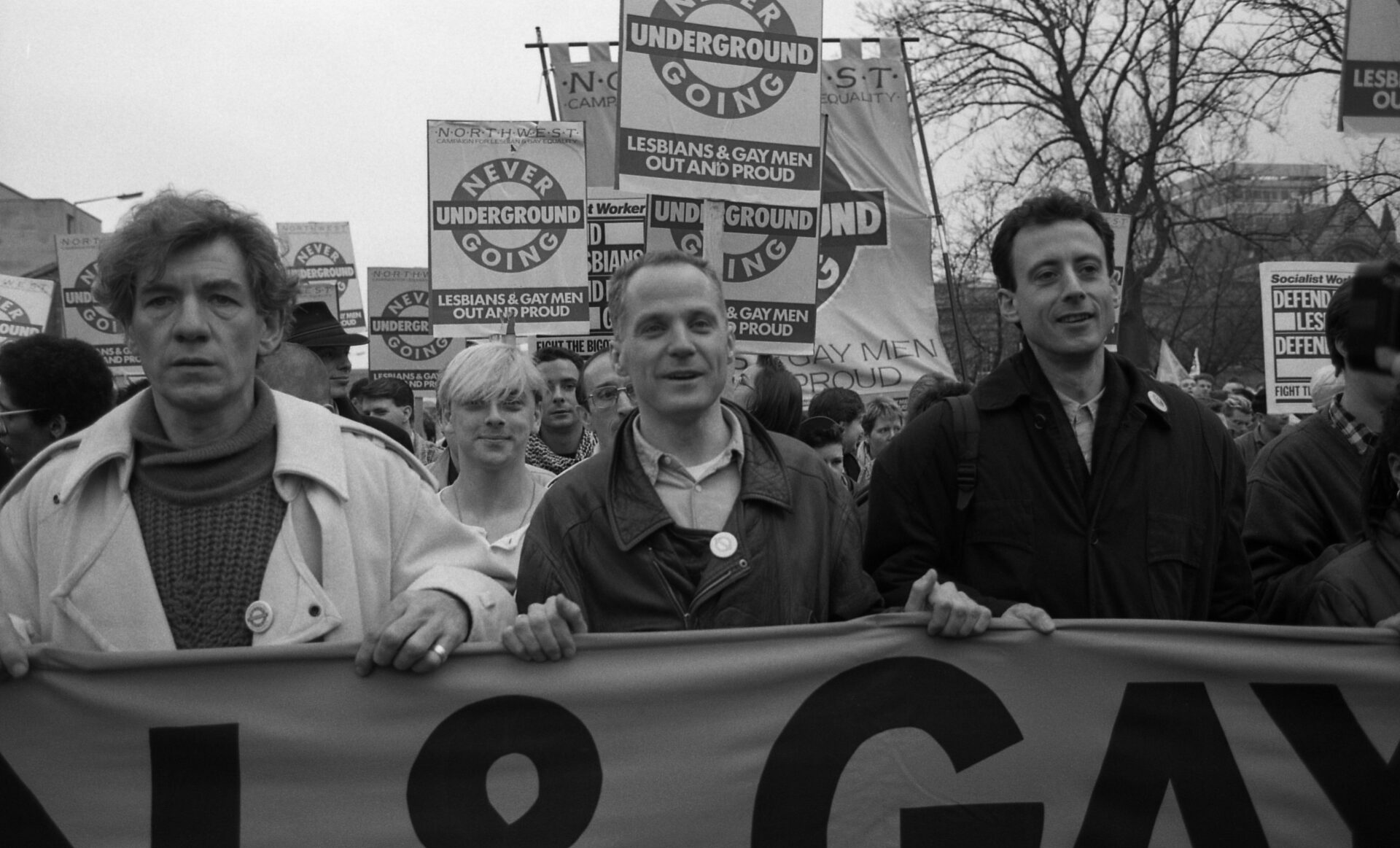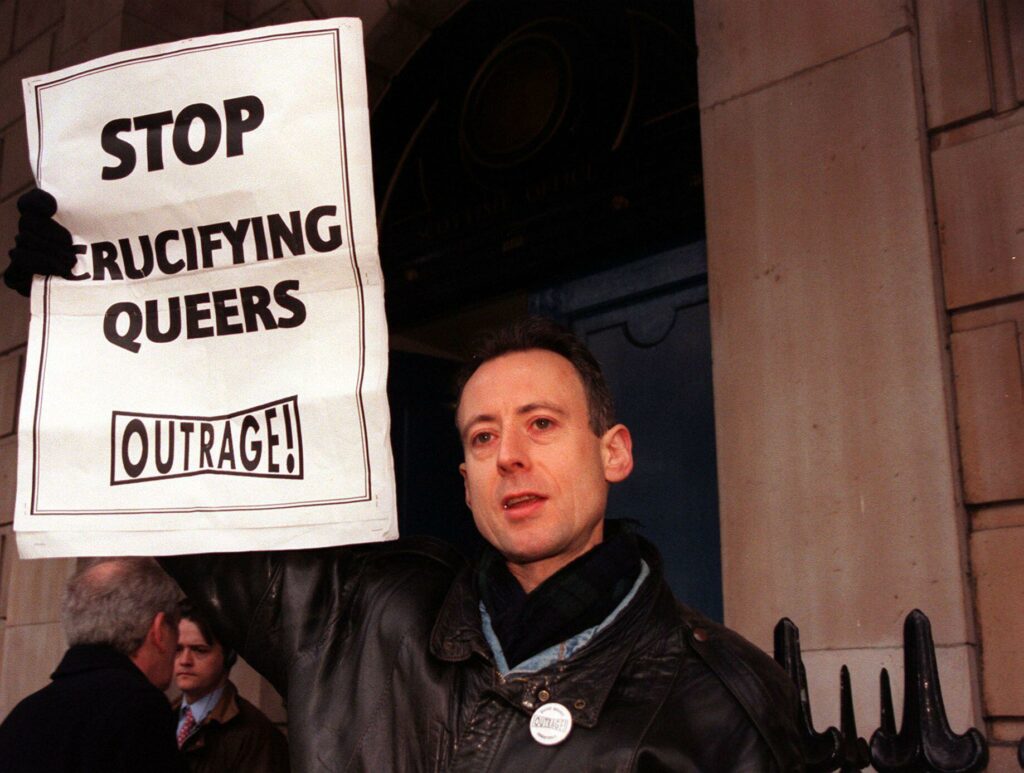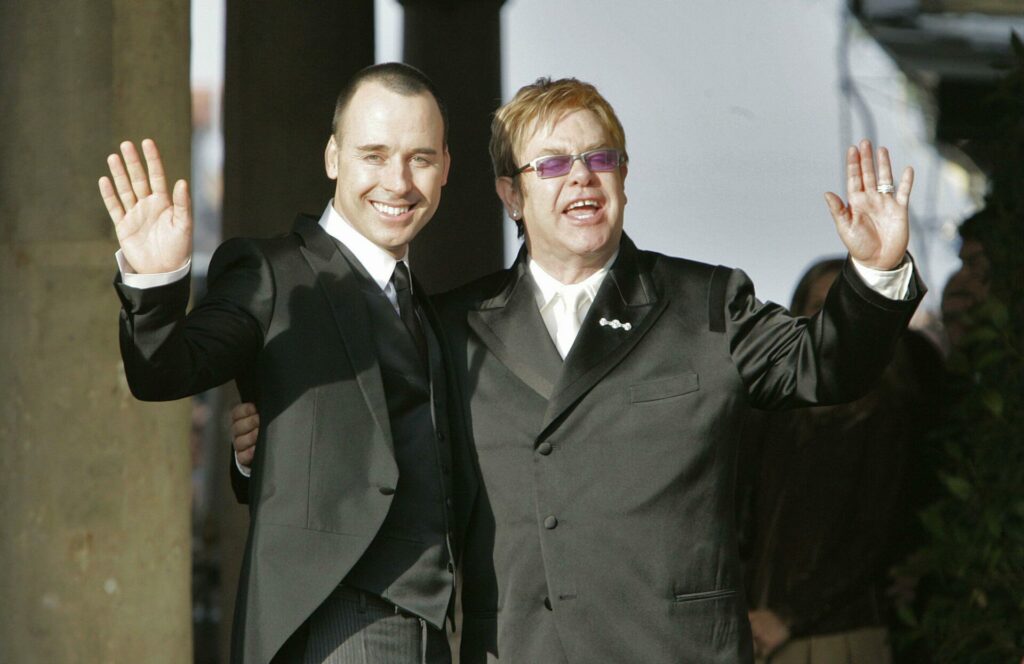My Policeman: How 1980s and ’90s gay rights fight prompted 21st century change
As My Policeman arrives on Prime Video in the UK, Dr Victoria Golding explores how the emergence of Aids and Section 28 in the 1980s lit the fire for a '90s gay rights fightback.

In partnership with Prime Video
“There were five or six gay men who were having a slightly drunken lunch at Ian McKellen’s place, bemoaning the fact that Section 28 had gone through, and instead of doing the traditional gay male thing and all getting around a piano and having a sing, they got around a typewriter,” says Lisa Power, describing the beginnings of the UK’s Stonewall organisation for the LGBT+ women’s oral history project, From a Whisper to a Roar.
Now the country’s best-known LGBTQ advocacy group, Stonewall was formed in May 1989 as a response to the difficulties faced by gay, lesbian and bisexual people in the late ’80s. Power, as a founder member, links the writing of Stonewall’s manifesto directly to the political attacks the community had encountered. Their strategy was to go straight to the seat of power – parliament – and lobby for change.

Exactly a year later, another group, OutRage! was established. It had the same aim of fighting for gay rights, but very different methods, employing direct action to further the cause.
By the mid ’00s, 15 years later, things were looking very different for the LGBTQ community. A whole host of equality legislation had been passed, including the age of consent, lifting the ban on lesbians and gays joining the armed forces, and equalising immigration rights and adoption and fostering rights. Perhaps most strikingly, the Civil Partnership Act 2004 gave legal recognition to lesbian and gay relationships for the first time.
This is the story of how the multi-faceted response of the queer community to the threats of the late ’80s played a huge part in gaining these legal freedoms.
Thatcher and Section 28
Margaret Thatcher’s 1987 Conservative Party Conference speech is one that sticks in the memory. Dressed all in blue with gleaming pearls, Maggie’s distinctive voice declares to thunderous applause that “children who need to be taught to respect traditional moral values are being taught that they have an inalienable right to be gay… All of those children are being cheated of a sound start in life. Yes, cheated.” One of the measures put in place to stem this apparent lesbian and gay tide was Section 28, the infamous piece of homophobic legislation that came into force in 1988. Section 28 made it illegal to “promote” homosexuality in schools, or to teach “the acceptability of homosexuality as a pretended family relationship.”
In addition, within the queer community, the devastating effect of Aids was in full force. An inadequate government response and the vitriol of certain newspapers stoked fears of a “gay plague”. In 1987, the British Social Attitudes Survey showed that 74 per cent of the general population, three out of four people, thought homosexual relations were “always” or “mostly” wrong.
Lesbians and gays came out fighting. If Section 28 was intended to send a message to lesbian and gay people that enough was enough, the historian Jeffrey Weeks suggests that the legislation had “exactly the opposite effect on the targeted community to the one intended”. Instead, the queer community mobilised in different ways across the country.
“In 1987, 74 per cent of the general population, three out of four people, thought homosexual relations were ‘always or mostly wrong.’”
The foundation of the Stonewall Group was one such development. Unlike other open-membership activist collectives, Stonewall was a select group of influential figures tasked with lobbying for legal reform. Power recalls that: “We were very clear that we were a closed shop who were not answerable to anyone, because we were going to go into places like Parliament and have discussions which could not be repeated in public until we knocked some sense into the politicians.”
This approach was not taken by everyone: other groups worked to disrupt rather than to reform the system. OutRage! worked by organising non-violent action and civil disobedience. If Stonewall aimed to whisper in a politician’s ear, OutRage! aimed to be shouting in their face.
They drew attention to queer issues through protests such as public ‘kiss-ins’ and carrying out ‘zaps’ (a form of organised surprise protest) on public figures and institutions who were contributing to homophobia. Influenced by groups such as Queer Nation and ACT UP in the US, the tactics of OutRage! and ACT UP groups in the UK were more provocative than those of Stonewall. In 1994, former members of one of the sub groups of OutRage!, LABIA (Lesbians Answer Back in Anger), went on to form the London branch of Lesbian Avengers, taking part in direct actions such as handcuffing themselves to the editor’s desk of the Sunday Times in 1995. In doing so, they drew on a long history of lesbian direct-action protests, from Greenham Common Peace Camp (against the storage of US nuclear missiles in the UK) to lesbians abseiling into the House of Lords (2nd February 1988) and invading The Six O’ Clock News – both in protest at the passing of Section 28 (23rd May 1988).

Other action groups emerged, such as Black Lesbians and Gays Against Media Homophobia. Established in 1990, it challenged anti-gay reporting in the media that targeted the Black queer community, most famously the homophobic coverage that footballer Justin Fashanu faced after he came out.
An aspect often commented on by those who remember this era of gay protest is the way lesbians and gay men increasingly worked together. Karen Fisher, who was also interviewed for the From a Whisper to a Roar project, remembers that for her, “tensions changed because we were more united for the Aids crisis, really. A lot of lesbians got very involved in supporting our gay men friends through that.”
Representation of both lesbians and gay men from across the community was something Stonewall insisted on within its ranks. Power recalls that the organisation “said we have to be 50/50 men and women, and they were also incredibly clear that they had to be racially diverse and politically diverse”.
Looking back, it could be said that the two different approaches, the whispering and the shouting, worked together to bring about change. Stonewall began to use European human rights legislation to challenge the legal position of lesbians and gay men, while the militancy of grassroots direct action gave a clear signal that these were issues that could not be ignored.
The battle for an equal age of consent
Since the 1967 Sexual Offences Act, the gay male age of consent had stood at 21, and Stonewall supported a legal challenge to this in the European Court of Human Rights. In 1994, although an initial amendment to bring the age of consent down to 16 was defeated in the House of Commons, the law lowered it to 18.
The election of Labour under Tony Blair in 1997 and the era of ‘Cool Britannia’ brought further change. Recently released documents in the National Archives show that upon taking office in 1997, Labour Home Secretary Jack Straw was mindful of how rulings by the European Court of Human Rights would influence both the gay age of consent and trans rights. A working group was proposed to consider the position of trans people in British law, and after a 1997 European Court of Human Rights case arguing that different ages of consent were discriminatory, Straw agreed to put the issue before Parliament.
“Looking back, it could be said that the two different approaches, the whispering and the shouting, worked together to bring about change.”
Stonewall would again use the European Court of Human Rights to overturn a ban on homosexuality in the armed forces, a change that coincided with the promise of a new millennium.
Some of the biggest legislative barriers to lesbian and gay equality began to be dismantled. An equal age of consent was eventually secured in 2001 (2008 in Northern Ireland). Section 28 was repealed in Scotland in 2000, and in England and Wales in 2003. The Adoption and Children Act 2002 gave unmarried couples, including same-sex couples, the right to adopt. And in 2004 the Civil Partnership Act legally recognised gay and lesbian partnerships. This year also saw the ‘pretended family relationships’ of 1988 give way to legally protected family relationships.

However, steps towards legal equality can only ever be one strand of the story. If there is one thing that defines the telling of queer history, it is its messiness, an intertwining of different narratives of loss and gain, disruption and reform. No single overarching ‘history’ can capture the vast array of experiences that queer people lived in and through. The community response to events of the late ’80s, and the legal changes that eventually followed, is a story with a focus on sexuality rather than gender identity: it was not until February 2015 that Stonewall extended its remit to campaign for trans equality alongside lesbian, gay and bisexual equality. Yet it was the same avenue as that used by age of consent campaigners – the European Court of Human Rights – that eventually led to the 2004 Gender Recognition Act, overturning a precedent set in 1970.
The lifting of some of the legal inequality over this time period also serves to highlight how social inequalities affected queer people in different ways. Between 1981 and 1986, London’s local Labour Government had provided funding for a whole host of initiatives to empower minority groups, such as the Black Lesbian and Gay Centre, and the Camden Lesbian Centre and Black Lesbian Group. When this local government was abolished in 1986, these groups struggled for funding: although the Black Lesbian and Gay Centre continued into 1990s, the eventual demise of these initiatives makes a narrative of universal progress hard to argue for.
In this way, we can see the 1990s as setting the scene for the 21st century, allowing a certain type of equality for a certain type of queer. The advances that did happen were hard-fought and hard-won, using different tactics to push for change. For some, this meant kiss-ins and handcuffs. For others, it meant political lobbying. As Lisa Power herself says, “I’ll win those battles by whatever weapons are to hand.”
My Policeman is available to watch now on Prime Video.
With thanks to the oral history project, From A Whisper To A Roar, and The National Archives
Dr Victoria Golding is a historian of queer 20th-century Britain
